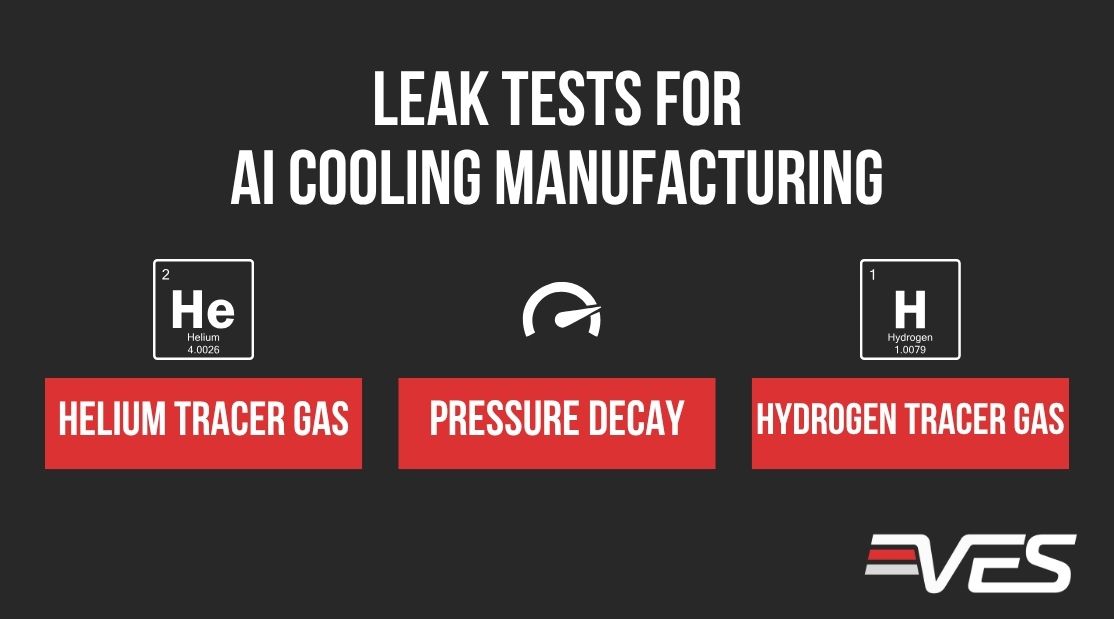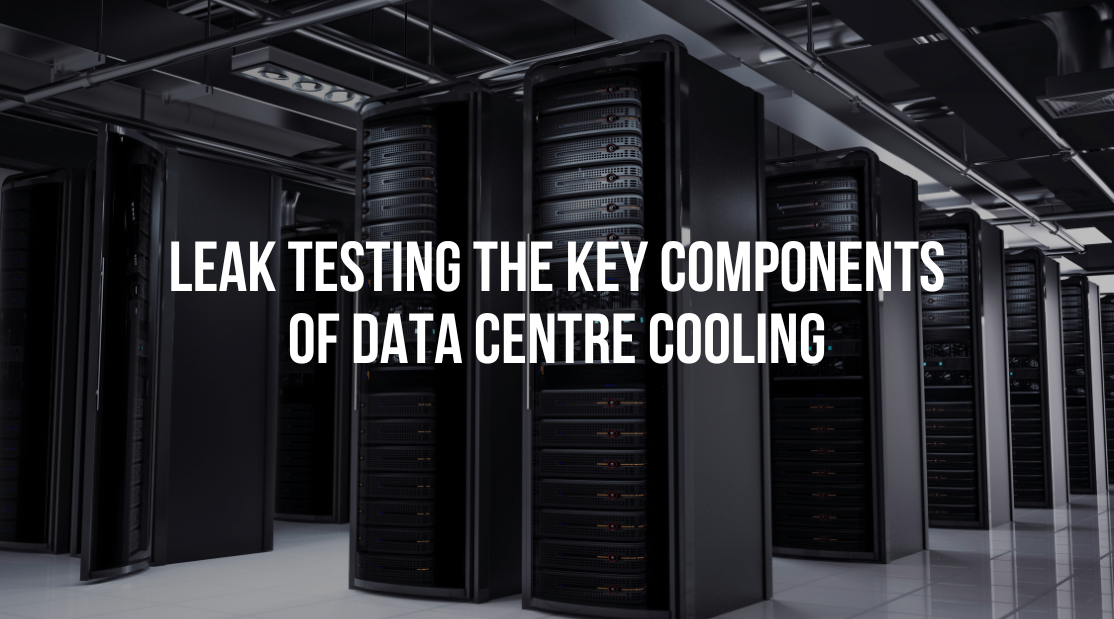When you’re building cooling systems for AI data centres, even a tiny leak can cause major problems. We’re talking downtime, damaged hardware, warranty costs, brand reputation and even regulatory issues. At VES, we’ve seen how fast things can go sideways when leak testing isn’t handled properly.
That’s why choosing the right method to test your cooling components, like cold plates, manifolds, CDUs and heat exchangers, isn’t just about ticking a box. It’s about protecting performance, quality and reliability.
Let’s break down the three main methods we see used in AI cooling manufacturing: helium tracer gas, hydrogen tracer gas (also known as forming gas), and pressure decay. I’ll walk you through how they work, where they shine and when they might fall short, based on what we’ve learned on the ground here at VES.
Helium Tracer Gas
If you need to detect ultra-fine leaks with total confidence, helium tracer gas testing is your go-to. This method involves pressurising the part with helium and using a detector like a mass spectrometer to spot where the helium escapes. Because helium is inert and only exists in trace amounts in the air, it’s incredibly easy to identify even the smallest leaks.
This method also performs well under real-world testing conditions like temperature changes or elastic deformation of components. That kind of stability is crucial when you’re dealing with parts that must work flawlessly under pressure.
Hydrogen Tracer Gas
Hydrogen tracer gas testing usually involves a safe mix, 5% hydrogen with 95% nitrogen, to stay within ISO safety limits. Hydrogen molecules are tiny, so they can pass through small leaks and be picked up by specific sensors.
It’s cheaper than helium and the equipment is often simpler, but there’s a trade-off. The sensitivity isn’t quite there for ultra-micro leaks, and background levels can be harder to control. Even with a non-flammable mix, you’ll also need to think about safety protocols. In vacuum-style test setups or where extremely tight sealing is needed, hydrogen testing might not be the right fit.
Pressure Decay
Pressure decay testing is the most straightforward of the three. You pressurise the part with air or inert gas, seal it and watch to see if the pressure drops over time. A drop means there’s a leak.
It’s a great first step for weeding out big issues because it’s easy to set up and low-cost. But when you need to catch micro leaks, pressure decay starts to struggle. Temperature shifts or even the volume of the part under test can mask small changes in pressure. Plus, it won’t tell you where the leak is, just that there’s a problem somewhere.
So, Which Method Should You Use?
If you’re making cooling components for AI data centres, you need near-perfect performance. Even the tiniest leak can cause serious issues in the field. That’s why we usually recommend a tiered strategy based on what works in real production environments.
Here’s how we approach it at VES:
- Use pressure decay or a basic screening method early on to catch obvious defects. It’s a good first filter and saves time.
- Follow up with helium tracer gas testing for final quality checks. This ensures that even micro leaks are caught before shipping.
- Hydrogen testing can be a middle step in some cases, especially if speed or cost is a factor, but it’s best used where sensitivity requirements are more relaxed.
Best Practices
Over the years, we’ve refined our approach to leak testing and built some rules to keep things reliable:
- Always use helium testing for final checks on critical parts
- Pre-screen with simpler methods to reduce pressure on more expensive setups
- Make sure your test fixtures and plumbing are leak-tight, even more than the parts you’re testing
- Combine sniffing and vacuum accumulation to quickly find and fix leaks
- Recover helium where possible to cut down on cost and waste
- Design your parts with testability in mind, like adding ports or paths for probe access
- Track and log leak data so you can spot quality trends early and adjust fast
Why Helium Needs to Be Part of Your Final Checks
Leak testing isn’t just a technical formality in AI cooling, it’s your frontline defence against failure. Helium tracer gas remains the most reliable method for detecting ultra-small leaks and should be a necessity of your final quality process.
Hydrogen and pressure decay methods each have a place too, but they’re not enough on their own if you’re aiming for reliability.
At VES, we don’t just build test solutions, we help manufacturers build confidence into every component that leaves the line.
Want to build a leak testing setup that really works?
We’d love to help. Whether you’re planning your first helium system, looking to improve throughput or need help designing leak-tight test fixtures, VES is here to support you every step of the way.


